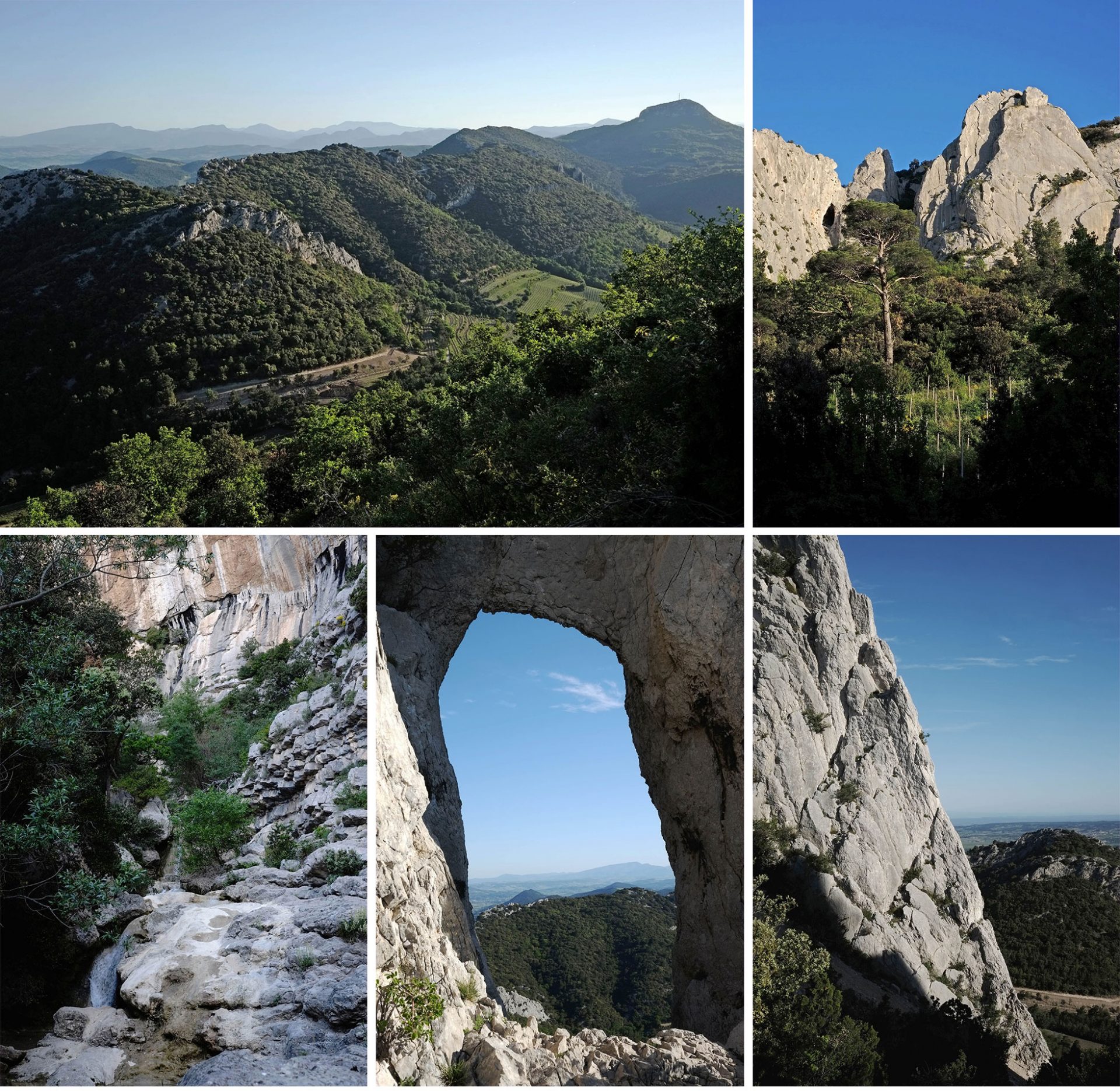Geologists call the phenomenal upward movement of earth that gave birth to the Dentelles de Montmirail some millions of years ago a “diapir.” Under the effect of pressure generated by the rising of the Pyrenees, huge rock salt deposits some five kilometers underground ascended to the surface along a fault, which caused the creation of three enormous limestone ridges — at that time, still submerged in a deep sea — which would become the Dentelles de Montmirail: the Clapis to the south, the Grand Travers to the north and the Saracen Dentelles in the middle.
The Land

This process took tens of millions of years. Geologists describe a “diapir” as a slow, “cold” volcanic eruption. This idea reflects accurately both the power of this geological phenomenon and the common character that wines from this region share; in fact, it is a rare opportunity for winemakers to work with such terroir, born from the bottom of the ancient sea. Intuitively, the flavorful depth of our wines, in addition to their particular saline note (often called “minerality”), for me is the signature of our family’s three crus. The wines’ nuances are no less pronounced, given the vineyards’ orientation and altitude.